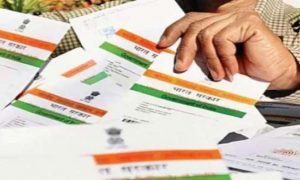The deadline for Income Tax Return filing is July 31. Income tax will be filed for the Financial Year 22-23 and the Assesment Year 23-24.
The income tax return (ITR) filing deadline of July 31 is approaching fast. The government has yet to make an announcement about the extension of the date, so the best way to avoid a penalty from tax authorities is to file your ITR in time.
If you have filed it many times or got it done through a tax professional, chances are you will file it correctly.
But for a newcomer, it is often difficult to know the right procedure and file it without making a mistake.
The incorrect filing of your farm may also attract monetary penalties or legal prosecution.
Here, ZeeBiz will tell you about the documents required and will take you through a complete guide to income tax filing.
Read More: Income Tax Return Filing: What is Nil ITR? Check 5 Benefits Of Filing Nil ITR
What are the relevant documents?
You need to have required documents before you start filing ITR, e.g. Form 16 from the current and previous company (if you have left the company during the financial year only), payslips, bank statements, house loan statement receipts, medical insurance receipts, investment documents from life insurance policies, mutual funds, and the National Savings Schemes.
Having these documents well in advance will come handy during the computation of tax.
Important things to know before filing ITR
How to calculate your total income
The source of income can be from your business, salary, capital gains, property rent, or house.
Salaried persons can take help from their Form 16 as it has much of the information required for filing an ITR.
The IT department site has instructions on where to fill in the income from a particular source.
Read More: ITR Filing: You Can End Up Paying Rs 6,000 For Not Linking PAN-Aadhaar, Check Details
What are my deductions?
There are many ways to save income tax.
One can claim deductions under IT sections 80C, 80D, 80E, etc.
The deductions can be in the form of PPF investments, the Employees’ Pension Scheme, life insurance premiums, health insurance premiums, mutual fund investments, tuition fees paid, etc.
However, the IT department asks you to submit proof of investments for deduction. You can upload those documents on the IT website.
Compute total tax payable
It depends on your tax regime, old or new. In the new tax regime, the basic exemption limit is Rs 3 lakh, while those with an income of Rs 7 lakh will get a tax rebate and won’t have to pay any income tax under Section 87.
Once you fill in your income sources on the IT site, it calculates the tax you have to pay.
Once you have done your homework, you can start the procedure.
Read More: Infosys staff trained more than that of TCS in FY23
Login or register on e-filing portal
Step 1: Visit the official e-filing website of ITR
Step 2: Register or Login to e-file your returns
If you have already registered yourself on the ITR portal, click on the ‘Login’ Here’ button.
If you are not a registered user on the website, click on the ‘Register Yourself’ button.
Step 3: Click on the ‘Taxpayer’ option, enter the details of your PAN card, and click on ‘validate’. Then click on ‘Continue’.
Step 4: Submit details such as your name, gender, address, date of birth, residential status, etc.
Step 5: Provide your Email ID and registered mobile number.
Step 6: Once you have filled the form, click on ‘Continue’.
Step 7: Once you verify the details, a 6-digit One Time Password (OTP) will be sent to your registered mobile number and Email address.
Step 8: Enter the OTP and follow the instructions given to complete the ITR registration process.
Step 9: After the OTP is verified, a new window will open. Here, you have to verify the details you provided.
Step 10: The last step will be to set up a password and secure a login message.
Step 11: Click on ‘Register’, following which, you will get an acknowledgment message showing that your registration process has been completed successfully.
Once you have created an account, the next step is to choose the right form.
Which form should I choose?
There are different income tax forms for different kinds of taxpayers.
It is necessary to choose the right form.
If you have a job and your source of income is your salary and the interest from bank accounts, then they must choose the ITR-1 form to file your income tax return.
Freelancers or self-employed professionals have to file their income tax return using the ITR-3 or ITR-4 form.
Freelancers or self-employed professionals should file ITR using the ITR-3 or ITR-4 forms.
You also have to choose the assessment year.
What details should I fill?
After selecting the tax regime and the assessment year, you can fill in details like income from different sources, deductions for which you are eligible, and bank details.
Also upload the required document proofs, like payment slips, rent receipts, etc.
Once filled, cross-check the information from your documents before submission. After cross-checking, click submit.
You have completed your ITR filing process.
How to E-verify returns
ITR must be verified after you submit the details. It can be done online or offline. You can use your Aadhaar OTP or Bank Electroic Verification Code.
Once the details have been submitted, the ITR form must be e-verified.
This can be done through various methods, like using an Aadhaar OTP or bank electronic verification code.
You can also take a printout of your filled form, sign it, and send it to the CPC Bangalore office through post.
When will I get my refund?
Once you e-verify your ITR, the income tax department will also cross-check your information.
If you have paid tax in excess, it returns to you in the bank account you mentioned in your IT form.
For that, keep tracking the status of your return through the IT website.
Generally, it takes two weeks to get the refund, but it can also take more time.
One should also be aware that all the documents used for ITR must be kept digitally and in hard copies for future reference.
If the IT department ever asks you to produce documents, you should have them with you.



































